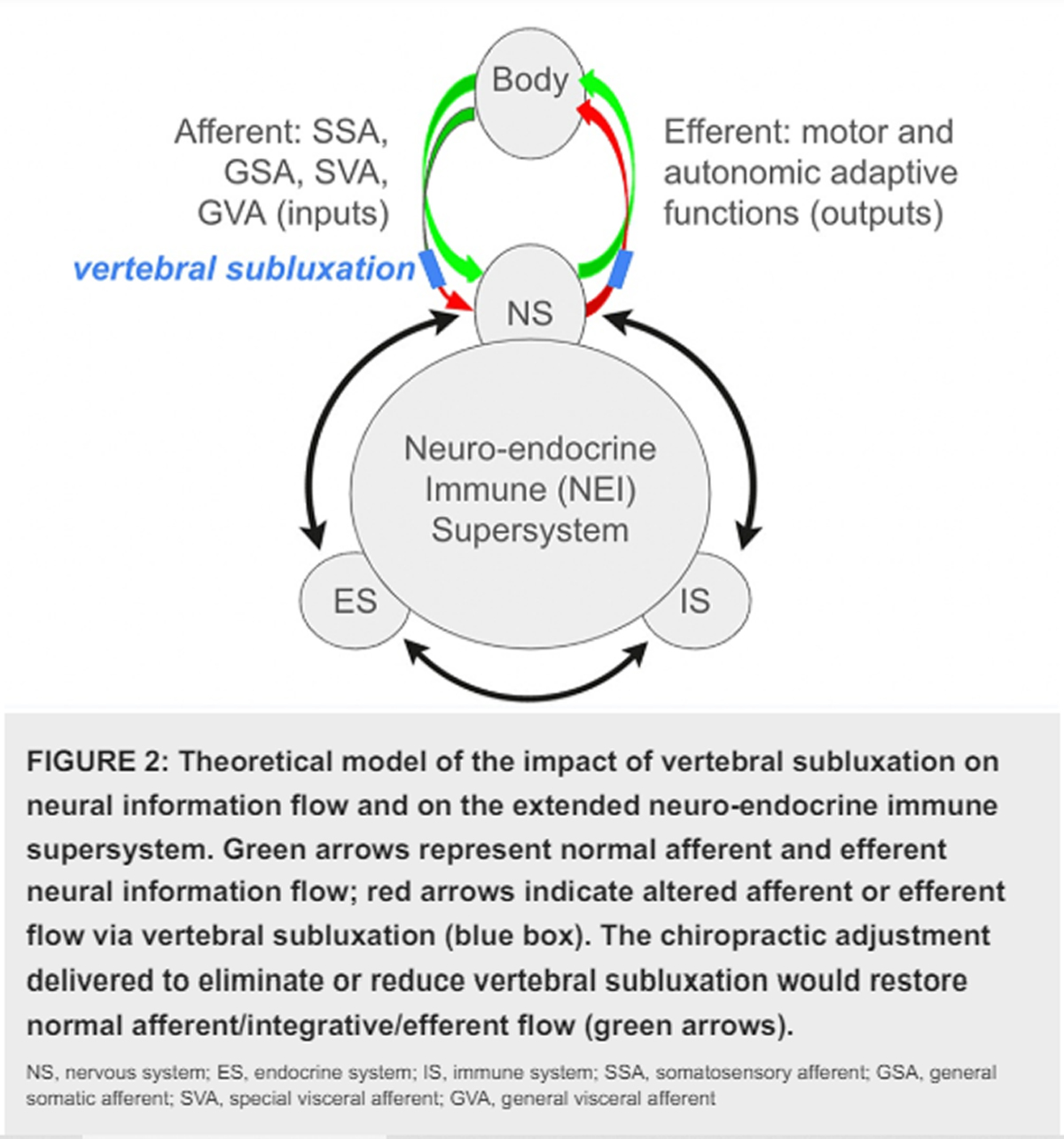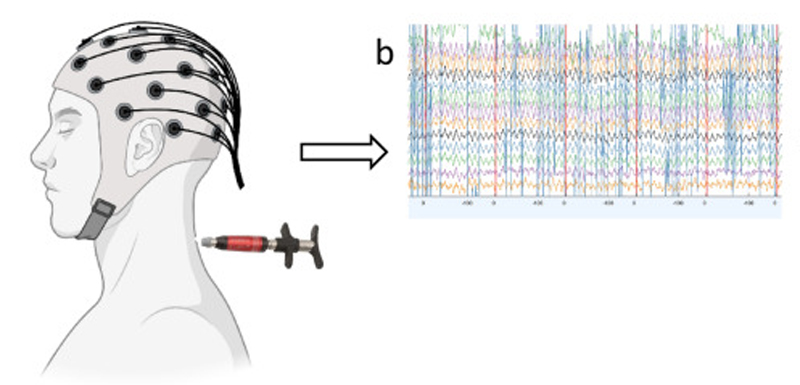Researching the Subluxation Complex
This paper published in the March 2010 issue of Chiropractic Journal of Australia, by the esteemed researcher Heidi Haavik Taylor, BSc (Chiro), PhD reviews the neurologic research of the last 15 years to help explain the “Neuromodulatory Effects of the Vertebral Subluxation and Chiropractic Care“.
We are grateful to the Editor Editor Rolf E. Peters, DC, MCSc, FICC, FACC for permission to reproduce this full-text article exclusively on the Chiro.Org website!
The elusive vertebral subluxation is the central defining clinical principle of the chiropractic profession. [1] A century ago the founder of chiropractic, D.D. Palmer, described vertebral subluxations as “slightly displaced vertebrae which press against nerves causing impingements, the result being too much or not enough functionating.” [2] Palmer argued that vertebral subluxations cause inflammation which is stressful to the body and viscera and results in “lowered tissue resistance.” [2]
He incorporated these concepts into a metaphysical philosophy of chiropractic which emphasised the supremacy of vital forces and the concept of the body possessing an Innate Intelligence which is compromised in its ability to care for and direct the vital functions of the body by nerve interference caused by vertebral subluxations. [2]
The use of this vitalistic paradigm and metaphysical constructs in his philosophy of chiropractic led detractors to malign his early theories and accuse him of being unscientific. [3] However, others have recognized that metaphysics plays a very important role in science by being the science of first principles, i.e. the fundamental a priori assumptions that lay the foundation for any research programme. [4]
Over the past century various authors have described the vertebral subluxation using a multitude of models that range from theories of pinched nerves within the intervertebral foramen (that even D.D. Palmer had discounted by 1910), [2, 3] through to more modern developments of Palmer’s early theories that postulate a neurodystrophic hypothesis where the vertebral subluxation leads to lowered tissue resistance by modifying hypothalamic function and ultimately immune responses. [3]
It is interesting to note that after almost 115 years of discussion there is still little consensus regarding the nature of the vertebral subluxation or its associated neurological manifestations. Some authors even deny that they exist. [1] It is clear therefore that the chiropractic profession needs to continue to invest time and money into subluxation-focussed-research in order to better understand the clinical entity that defines the profession.
Over the past 15 years our research group has been conducting a variety of experiments aimed at testing out the theory that adjusting subluxations improves central nervous system functioning and overall expression of health and well being.
To do this the theory was first formulated into a model (Figure 2) that could be scientifically tested with a programme of research studies. This model became the basis for the lead author’s PhD research, [5] and continues to be a foundational premise that our research group is attempting to elucidate with our work.
The model was constructed using early chiropractic research data and a thorough review of the neurophysiology scientific literature.
The model assumes that the putative vertebral subluxation represents a state of altered afferent input which is responsible for ongoing maladaptive central plastic changes that over time can lead to dysfunction, pain and other symptoms. Thus a potential mechanism which could explain how chiropractic adjustments improve function is that altered afferent feedback from a vertebral subluxation alters the afferent “milieu” into which subsequent afferent feedback from the spine and limbs is received and processed, thus leading to altered sensorimotor integration of the afferent input, which is then normalised by high-velocity, low-amplitude adjustments of the vertebral subluxation.
This theory is plausible considering that it is now well established that the human central nervous system (CNS) retains its ability to adapt to its ever-changing environment, and that both increased (hyperafferentation) and decreased (deafferentation) afferent input leads to changes in CNS functioning. [6-8]
The remainder of this full-text article is
available for your review.There are many more articles like this at the:





This is an important research paper and it’s great that you got permission to reprint it here. The more we understand about the neurological impact of subluxations and adjustments, the closer we will come to being the “first line of defense” in the health care field.
RESPONSE from Frank:
Thanks Dr. Terry,
As far back as 1993 Manga suggested that “A very good case can be made for making chiropractors the gatekeepers for management of low-back pain in the Workers’ Compensation System in Ontario” [1].
Since that time numerous studies have demonstrated chiropractic’s efficacy and cost-effectiveness [2], not to mention safety [3], in treating neck pain, headaches, and thoracic spine pain, so that it’s now reasonable to recommend chiropractors as the gatekeepers in all hospitals, for any patients presenting with neuromusculoskeletal complaints.
If the patient then needs additional imaging or medical management, we can refer them to appropriate providers, but otherwise it would slash the costs asscociated with unnecessary special studies ordered by doctors to compensate for their low level of training in NMS disgnosis. [4]
REFERENCES:
1. A Study to Examine the Effectiveness and Cost-Effectiveness of Chiropractic Management of Low-Back Pain (akas The Manga Report 1993)
http://www.chiro.org/LINKS/GUIDELINES/Manga_93.shtml
2. The Cost-Effectiveness of Chiropractic Page
http://www.chiro.org/LINKS/Cost_Effectiveness.shtml
3. The Safety of Chiropractic Page
http://www.chiro.org/LINKS/Safety.shtml
4. End Medical Mis-Management of Musculoskeletal Complaints
http://www.chiro.org/ChiroZine/End_Medical_Mis-Management_of_Musculoskeletal_Complaints.shtml
Make this front page of every trade journal.
Sensorimotor integration is so fundamentally important to our functioning, yet it is so basic and subtle that most people are not very aware of its importance. The challenge is to develop ways to measure it and demonstrate its presence and absence to patients. I like the authors idea of a specific questionnaire — this could be a useful outcome measure.